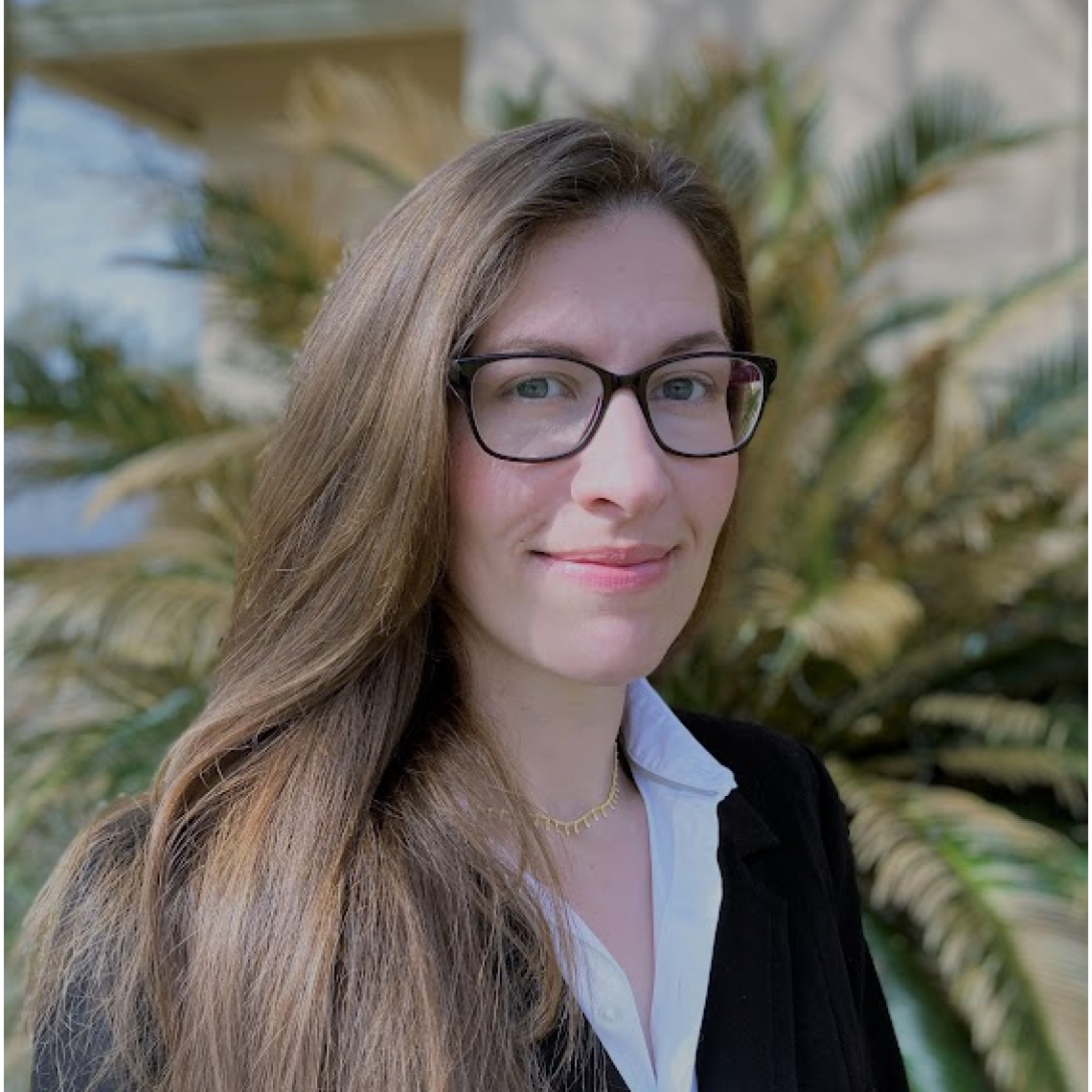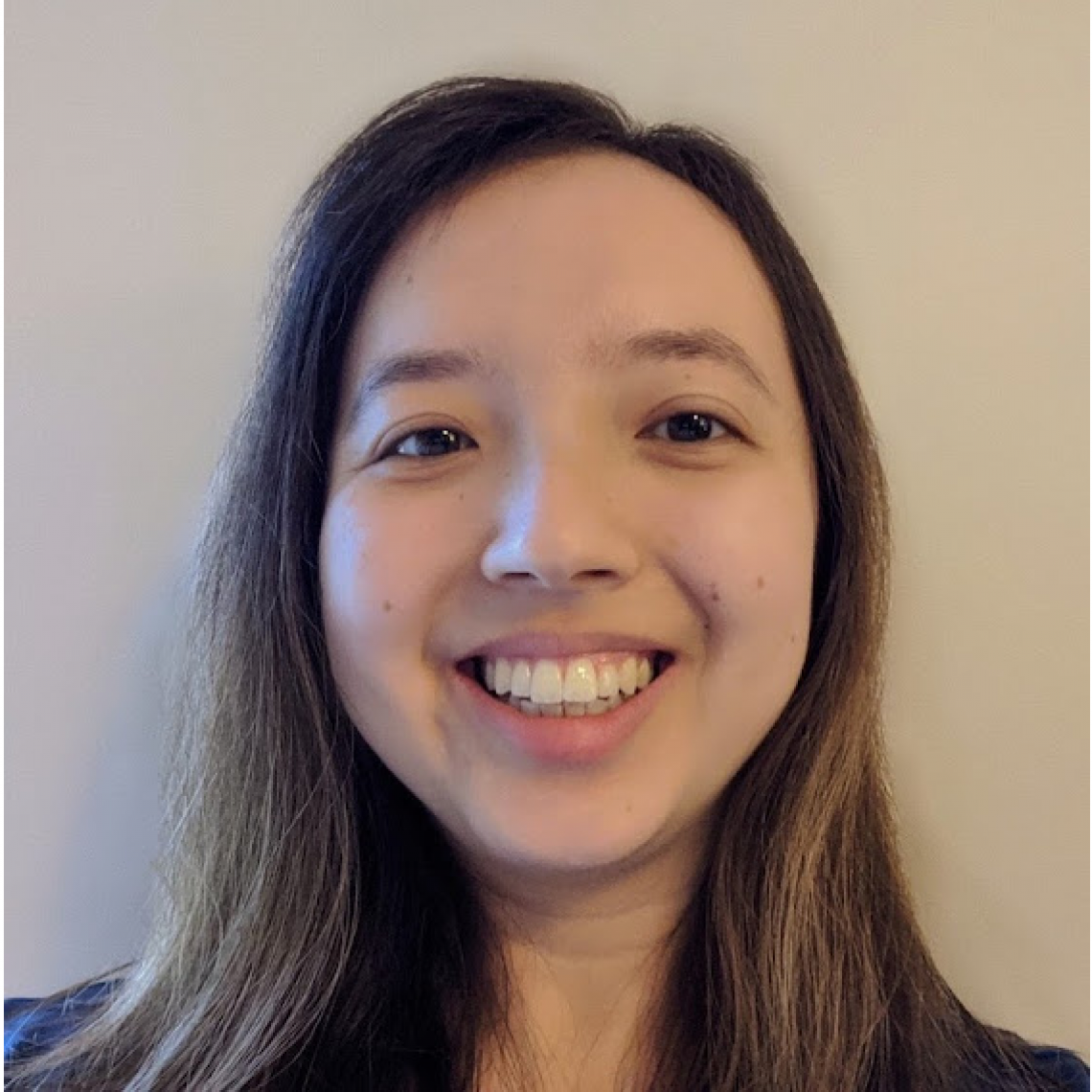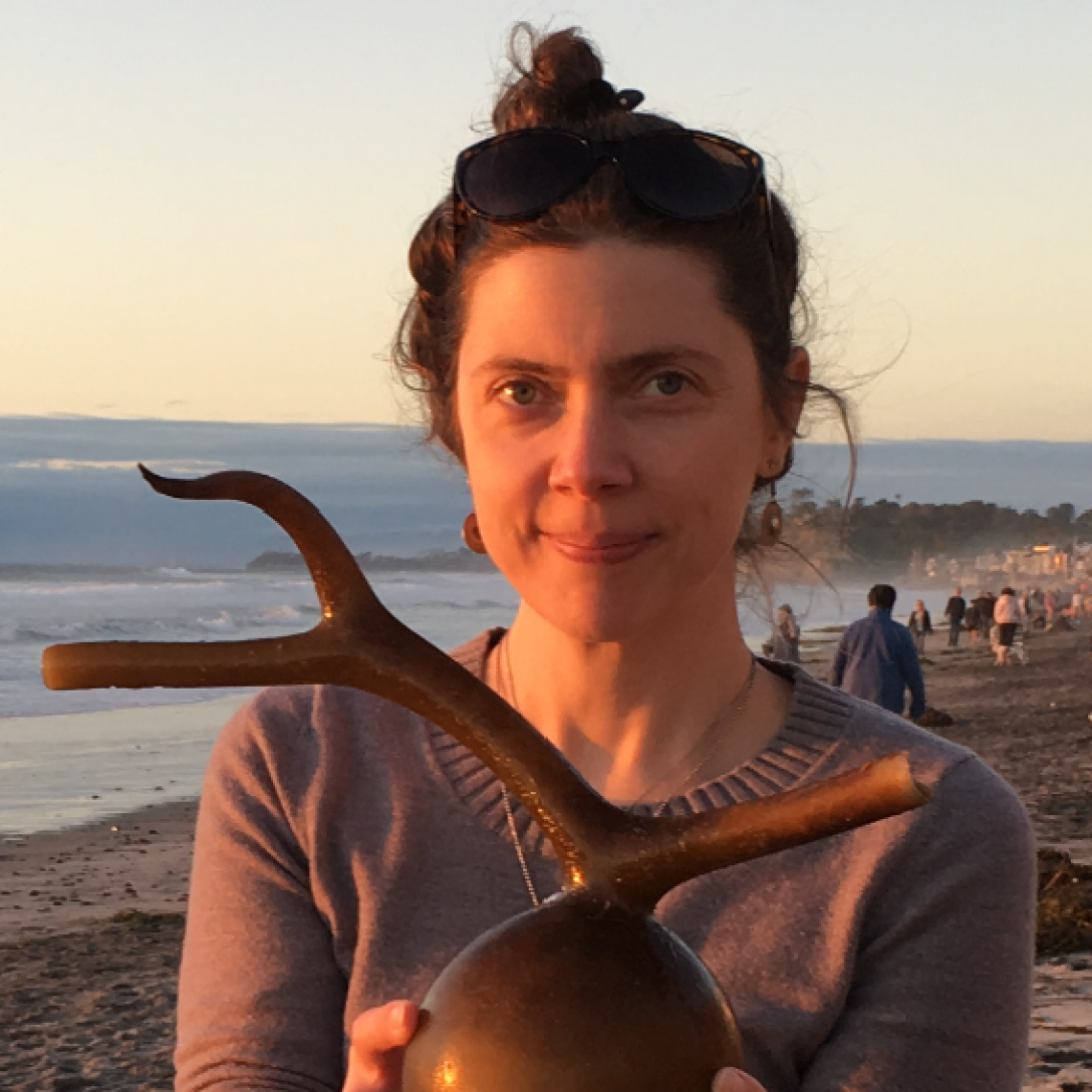colloquia
Bio:
Dr Jelina Haines is a Filipino-born Australian with an ancestral link to Indigenous Americas-Mexico. Haines completed her PhD studies in Information Science at the School of UniSA-STEM, University of South Australia. With 20 years of experience working in the Indigenous community in Ngarrindjeri country. Her research interest lies in interdisciplinary studies related to human information behavior, ethical information recovery of specific knowledge held by traditional Storytellers, and the social impact of digital technologies in marginalized communities, particularly Indigenous people. Dr. Haines is passionate about the importance of preserving traditional stories and enhancing their value and preservation, assisted by technology for everyday learning practices. An award-winning visual art designer, her collaborative work has been commissioned by major large institutions, including LeHarve Museum, France, the National Gallery of Australia, South Australian Museum, South Australian Maritime Museum, Uniting Communities, Adelaide, Department of Infrastructure, private companies, and private individuals in 16 countries. Besides, she uses her knowledge as a video ethnographer, Indigenous advocate, and Researcher to promote cultural harmony by working together, regardless of cultural identity, race, and tradition. Dr. Haines's doctoral thesis redefined traditional learning by merging art and technology with ethical visualization of living culture, tradition, and history, integrating Storyteller's; voices, experiences, adaptability, tolerance, and resilience shared in their unique social and cultural contexts.
Dr Jelina Haines is the recipient of the 2022 ASIS&T ProQuest Doctoral Dissertation Award, an open international competition in the field of information science & technology, recognizing her outstanding PhD thesis and the continuing importance of the topic to theory development and practical applications in information science; soundness of methodology; organization and clarity of the presentation; and quality of data.
Abstract:
Data visualization is focused on translating information into a visual context, effectively communicating information ethically and universally. With a multidisciplinary landscape of theories and analytical frameworks relating to interactive visualization, this presentation engages with issues concerning the role of community–based participatory research on digital and social inclusion data visualization of Indigenous knowledge practices. The synergy of Community-based participatory research (CBPR hereafter) has a strong application record across various research disciplines and sectors, particularly in Indigenous health and social sciences (Tripathi & Bhattarya, 2004). An imminent challenge in legitimizing CBPR in information science is minimizing biases and misappropriation in translating and disseminating oral knowledge, which can be achieved by shared dialogue in data-gathering methods, knowledge transparency, and enhancing the ethical process, which requires researchers to collaborate with the community involved mutually (Katapally, 2019).
In this research, oral knowledge embedded in the findings plays a crucial role in creating meaningful and rich information for data visualization and stories' integrity and authenticity (Jensen, 2012). While obstacles exist in presenting Indigenous knowledge, the findings referenced oral stories and communal practices as a source of symbolic knowledge that combines Storytellers' wisdom, the law, culture, continuing connections to the land, and kinship. Visualized data results emphasized the locality of the Indigenous knowledge and the community's strong involvement in the research process that makes up the topological information of local knowledge, such as Ngarrindjeri weaving and storytelling.
Hence, the presentation shows a repertoire of methodologies ensuring digital social inclusion of data visualization is employed within a cultural context (Klonner, 2021). Overall, the findings demonstrate how CBPR could be used parallel to Ngarrindjeri beliefs and traditions. The research is influenced at the periphery of local and western knowledge, whereby continuous negotiations and shared dialogue with the community are crucial to creating social inclusivity and digitally preserving oral wisdom for prosperity (Miner, 2022).
References
Jensen, K. L., Winschiers-Theophilus, H., Rodil, K., Winschiers-Goagoses, N., Kapuire, G. K., & Kamukuenjandje, R. (2012). Putting it in perspective: designing a 3D visualization to contextualize indigenous knowledge in rural Namibia. In Proceedings of the Designing Interactive Systems Conference (pp. 196-199).
Katapally, T. R. (2019). The smart framework: integration of citizen science, community based participatory research, and systems science for population health science in the digital age. JMIR mHealth and uHealth, 7(8), e14056.
Klonner, C., Usón, T. J., Aeschbach, N., & Höfle, B. (2021). Participatory Mapping and Visualization of Local Knowledge: An Example from Eberbach, Germany. International Journal of Disaster Risk Science, 12(1), 56-71.
Miner, J. D. (2022). Informatic tactics: Indigenous activism and digital cartographies of gender-based violence. Information, Communication & Society, 25(3), 431-448.
Tripathi, N., & Bhattarya, S. (2004). Integrating indigenous knowledge and GIS for participatory natural resource management: State‐of‐the‐practice. The electronic journal of information systems in developing countries, 17(1), 1-13.

Bio:
Matt Cook is Digital Scholarship Program Manager at Harvard Library. In this role, Matt provides instruction, assists in the development of technology spaces, and leads efforts to digitize and explore heterogenous (i.e. text, artifacts, AV, etc.) material collections, at scale, while keeping “humans in the loop” through the use of augmented and virtual reality interfaces. As a researcher, Matt also studies the state and trajectory of digital scholarship generally, what it takes to manage exploratory teams in libraries, and the scholarly impact of new knowledge services related to physical fabrication and mindfulness. Find out more at mncook.net.
Abstract:
While various STEM and design disciplines (e.g. architecture) have deployed virtual reality systems to support their research and instruction, the technology has yet to find a home within text-centric humanities, like History, Philosophy, and Literature. Fortunately, recent practical (headset management) and programmatic (natural language processing) advances allow for the immersive visualization of abstract source material, including text, suggesting an important role for VR in these fields as well. This talk will present case studies and associated methods, which can be reproduced to engage with humanistic objects-of-study in virtual reality.

Bio:
Fanny A. Ramirez is an Assistant Professor at Louisiana State University where she holds a joint appointment with the Manship School of Mass Communication and LSU’s interdisciplinary Center for Computation and Technology. Her research examines the use of information communication technologies in criminal justice and sexual violence contexts with an eye towards issues of inequality, discrimination, and privacy.
Abstract:
The growing use of digital evidence from smartphones and social media has led to a digital divide in the U.S. criminal justice system that advantages law enforcement and prosecutors while further increasing the vulnerability of poor people and people of color who rely on public legal assistance. Drawing on a year-long ethnographic study of one of the first digital forensics laboratories in a public defender office, I argue that digital inclusion in the form of better resources for public defenders is necessary for equitable and fair representation in today’s criminal justice system. Today's talk will draw on case studies to show that access to digital forensic technologies is an important equalizing tool that allows public defenders to 1) mount strong, data-driven cases, 2) create counter narratives that challenge depictions of marginalized defendants as dangerous, and 3) engage in nuanced storytelling to highlight the complexities of human relationships and life circumstances that shape cases.

Bio:
Su Lin Blodgett is a researcher in the Fairness, Accountability, Transparency, and Ethics (FATE) group at Microsoft Research Montréal. Her research focuses on the ethical and social implications of language technologies, focusing on the complexities of language and language technologies in their social contexts, and on supporting NLP practitioners in their ethical work. She completed her Ph.D. in computer science at the University of Massachusetts Amherst, where she was supported by the NSF Graduate Research Fellowship.
Abstract:
Language technologies are now ubiquitous. Yet the benefits of these technologies do not accrue evenly to all people, and they can be harmful; they can reproduce stereotypes, prevent speakers of “non-standard” language varieties from participating fully in public discourse, and reinscribe historical patterns of linguistic discrimination. In this talk, I will take a tour through the rapidly emerging body of research examining bias and harm in language technologies and offer some perspective on the many challenges of this work. I will discuss some recent efforts to understand language-related harms in their sociohistorical contexts, and to investigate NLP resources developed for one such harm—stereotyping—touching on the complexities of deciding what these resources ought to measure, and how they ought to measure it.

Bio:
Christina Dunbar-Hester is the author of Hacking Diversity: The Politics of Inclusion in Open Technology Cultures (Princeton U Press, 2020) and Low Power to the People: Pirates, Protest, and Politics in FM Radio Activism (MIT Press, 2014). She is a faculty member in the Annenberg School of Communication at the University of Southern California, in Los Angeles, USA, and she holds a PhD in Science & Technology Studies from Cornell University. She is currently writing Oil Beach: How Toxic Infrastructure Threatens Life in the Ports of Los Angeles and Beyond, under contract with University of Chicago Press.
Abstract:
In recent years, conflicts over values and practices have emerged in hacking and free/libre and open source (FLOSS) communities, centering around diversity and inclusion. This talk features ethnographic research on feminist hacking and "diversity" efforts in mainstream hacking and FLOSS. It explores how participants work through thorny issues of inclusion in their practices with code, hardware, and one another. It illustrates how there is more at stake in "hacking diversity" than a politics of representation can capture and argues that how diversity advocates bound their interventions matters for hacking communities, for "tech" more broadly, and for critical analysis of technology-oriented cultures.
Abstract:
At Riot we aspire to be the most player-focused game company in the world, and as part of that we leverage data to improve the player experience. In this talk I will go through several data projects I have been part of at Riot and how we leverage data and machine learning in fun and interesting ways.
Bio:
Wesley Kerr is the Head of Technology Research at Riot Games. He holds a PhD from the University of Arizona in Computer Science where he performed research at the intersection of game development and artificial intelligence. His first tour at Riot Games began in 2013, working as part of the initial Big Data team building the foundations for all future data products. He took a detour to Google where he worked for Google Research on improving search and discovery for games in the Google Play Store. After returning to Riot in 2016 he's worked on League of Legends building products like Your Shop and helping curb disruptive behavior on our player dynamics team. Over the last two years he has had the privilege of being tech lead for data and helping steer updates to our data foundations in order to support another ten years of Riot Games. In his latest role, he will be focused on expanding the research capabilities across all of technology for Riot as we set off on our next chapter at Riot.
Abstract: Dr. Sebold’s History in Stones project accomplishes two major goals that combines history and technology. The first is to map the cemeteries of Central Aroostook County. This mapping includes cleaning the stones, transcribing all the information on a stone, photographing it, and using a GPS device to collect a stone’s latitude and longitude. All this information is then used to create a searchable cemetery map using ArcGIS Online’s Web Mapping Applications. The second is to document the history of central Aroostook County by researching some of the people whose stones are in the mapped cemeteries. These people are placed into their historical context to connect their lives to larger state, national and world events. Their stories are told using another ArcGIS Online Web Application called StoryMaps. The StoryMaps are interactive as they allow links to other websites, videos, and illustrations. They can also incorporate interactive maps made in ArcGIS Online. The presentation will discuss the project and the use of using ArcGIS Online to capture history.
Bio: Dr. Kimberly Sebold is a Professor of History at the University of Maine at Presque Isle. She has worked there for 22 years and has taught online methodology classes on local history. Her passion for local history started in her Master’s Program at the University of Delaware where she researched the development of the chicken industry on the Delmarva Peninsula where she grew up. And as boring as that sounds, a black market in chickens became the center of the story. She continued researching and writing local history while working for the Historic American Buildings Survey on a project about salt marsh farming in Southern Jersey. The salt marshes and local history led to a Ph.D. at the University of Maine at Orono and then on to a job at the University of Maine at Presque Isle. Local history connects everyday people to larger events and makes history more relevant. ArcGIS Online has now provided a way to map local history and present it in an engaging manner.
Abstract: Two immersive virtual nature applications will be presented. One a virtual reality (VR) digital twin of the real UCF Arboretum and the other an augmented reality (AR) app used to visualize data of two woodland scenarios. The AR app was used in an immersive, multimodal, interactive informal learning research study at the Carnegie Museum of Natural History. The entire design production and evaluation process will be presented. The methods of constructing AR and VR ready plant models and visualizing them from plant population ESRI GIS datasets in Unreal Engine will be covered in detail. The iterative Expert-Learner-User-Experience design process used to build both products will be presented as well as the evaluation and learning outcomes from the study.
Bio: Maria C. R. Harrington Ph.D. is an American information scientist and artist. Research focus is on aesthetics in the perceptual ambient array and information science theory as it relates to reality and beauty found in natural environments using augmented reality (AR), virtual reality (VR), GIS simulations, and new media art to explore the phenomena of human reactions. Such tools are used to investigate human interaction of real-virtual environments and impacts on perception, learning, health, and creativity. Such systems influence scientific, human, social, and cultural transformations. She is currently an assistant professor at the University of Central Florida, director of The Harrington Lab, and has consulted on projects using AR and VR with the Carnegie Museum of Natural History. Website https://virtualnature.org/
When
11 a.m. to Noon April 1, 2022
Bio: Laura W. Dozal is a third year PhD student at the UArizona iSchool. Her recent work has focused on analyzing and visualizing network clusters to understand social behavior. Her methods include deep learning for Natural Language Processing applications of online crime and disinformation and quantitative network analysis to identify community spaces.
Abstract: The interdisciplinary approach to understanding visual frames of social movement images through computational methods has the potential to communicate information on the actions, messages, and causes surrounding a movement by understanding how images are circulated throughout online networks. In this literature review, visual methods and computational analysis are explored to facilitate identification of frames that provide meaning for a user. Frame analysis and Gillian Rose’s Four Sites of a Critical Visual Methodology is reviewed and applied as a framework to analyze visual interpretation applications. The qualitative methods reviewed cover components of content analysis and technology in social movements. The quantitative methods reviewed consist of social network analysis applications of Exponential Random Graph Models (ERGM) and notions of position using block model analysis, as well as visual sentiment analysis using methods of neural networks in machine learning. Looking at visual frames through the lens of social movements opens space to review various types of applications for understanding how a visual can create meaning through perspective.
When
2 p.m. to 3 p.m. Feb. 18, 2022
Bio: Loren M. Champlin is a Ph.D. student at the School of Information minoring in Cognitive Science while also completing a graduate certificate in Computational Social Sciences at the University of Arizona. He has also completed a B.S. in Applied Mathematics with a minor in Computer Science, a M.Ed. in Teaching and Teacher Education, and a M.S. in Statistics all from the University of Arizona. Currently, his main research focus is Symbolic Artificial Intelligence, specifically the topics of automated planning, plan recognition, and knowledge engineering as they relate to Cognitive Science and Theory of Mind. His current work focuses on developing an AI system that is capable of understanding and assisting teams of humans cooperating on a specific goal or task.
Abstract: There is an increasing need for technologies that can assist groups of human users cooperating on a coordinated task. An essential component to providing this need is an artificial intelligence (AI) system that can recognize and understand the behaviors and plans of a cooperating group of human users. This capability is known as Plan Recognition or more specifically Cooperative Multi-Agent Plan Recognition (MAPR) when dealing with multiple cooperating agents. My talk introduces Plan Recognition and Cooperative MAPR, describes the taxonomy of approaches for implementing Cooperative MAPR, and discusses some conclusions I have made about the state of the field.
When
2 p.m. to 3 p.m. March 18, 2022


